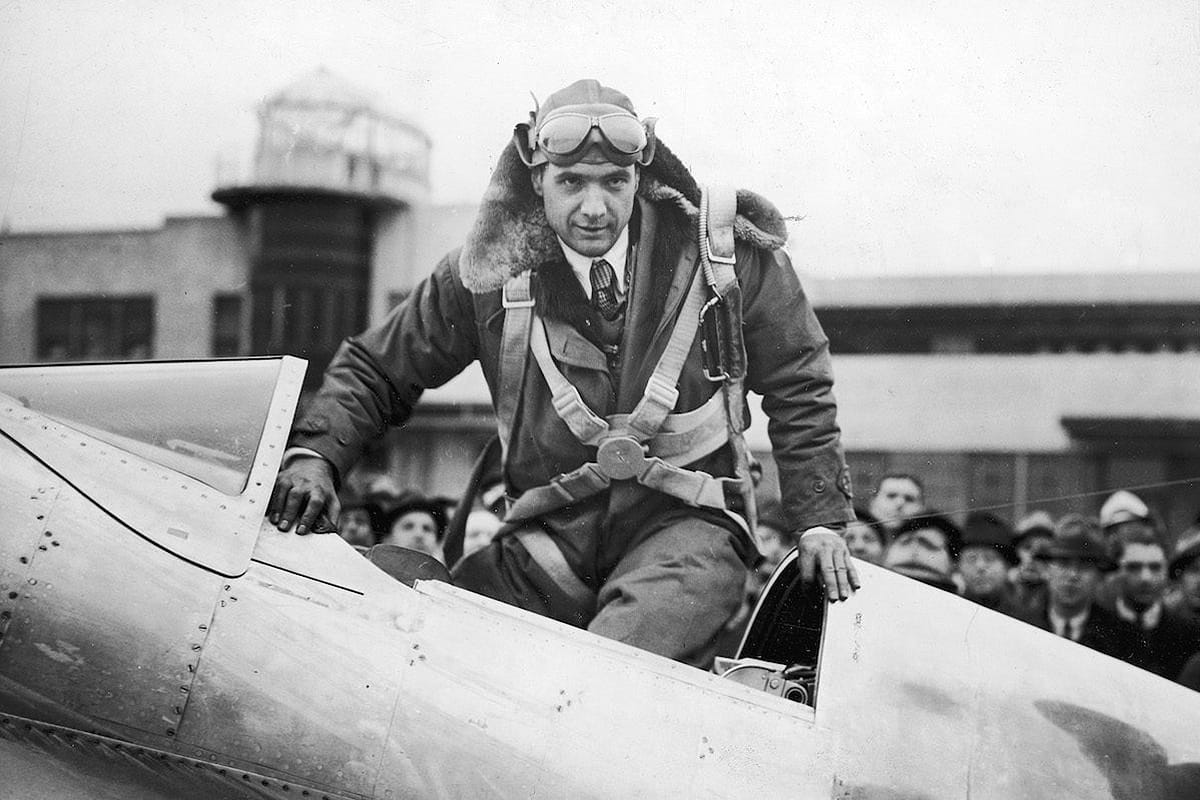The Titan Who Couldn’t Let Go

Before Elon Musk, before Steve Jobs, before the idea of a billionaire-as-visionary became a cultural trope, there was Howard Hughes.
He was born into wealth and turned it into something larger than life. By his mid-30s, he had built a career as a Hollywood producer, turned himself into the fastest man alive by setting airspeed records, and taken over Trans World Airlines, transforming it into one of the dominant carriers of the Jet Age. He poured millions into experimental aircraft—some successful, some disastrous—and wasn’t afraid to bet the entire farm on ideas no one else would touch. The most infamous of these was the Spruce Goose: a massive wooden seaplane designed to carry troops over the Atlantic during World War II. It flew exactly once, for less than a minute, but the symbolism lingered. Hughes was trying to outfly history itself.
He was brilliant.
He was bold.
He was also deeply unwell.
By the 1950s, Hughes had begun to unravel. What started as quirks—a fixation on cleanliness, a need for control—became pathology. He retreated from public life. At one point, he locked himself in a screening room for four months, naked, surrounded by tissue boxes and milk bottles, obsessively watching the same films on loop. Later, he would occupy the top floor of the Desert Inn in Las Vegas, issuing memos to subordinates he refused to meet, trying to control a multi-billion-dollar empire from behind blackout curtains.
This is the Hughes Paradox. The same mind that made him a titan of aviation and cinema also led him into a labyrinth of delusion and decay. He succeeded because he was obsessed. He failed for the same reason.
There’s a pattern here, and it’s bigger than Hughes. Obsession works—in short bursts, in narrow contexts, with clear feedback loops. But scale it up, let it harden into infrastructure, and it starts to rot the system from the inside. Hughes structurally disallowed any process he couldn’t control. That works in a cockpit. It fails in a boardroom.
And the damage was inevitable. His empire hollowed out around him. TWA’s decline began under his absentee control. His aerospace projects stalled. By the time he died in 1976, he weighed 90 pounds, was addicted to codeine, and hadn’t been seen in public for over a decade.
We like to imagine that genius excuses everything. That the rules don’t apply to visionaries. Hughes complicates that fantasy. He didn’t go down in flames. He faded out—trapped inside a fortress of his own making, unable to let go, unable to delegate, unable to live in any world that wasn’t entirely under his control.
Obsession built the engine. Obsession also blew it up.
Westenberg explores the intersection of technology, systems thinking, and philosophy that shapes our future—without the fluff.
Free readers get powerful ideas. Paid subscribers get more:
- Exclusive in-depth essays
- Early access to new work
- Private discussions and Q&As
- Future digital products and resources
- The satisfaction of supporting independent thinking
$5/month or $50/year. No sponsors. No bullshit. Just valuable insight delivered directly.
If it makes you think—we're aligned.
Discussion